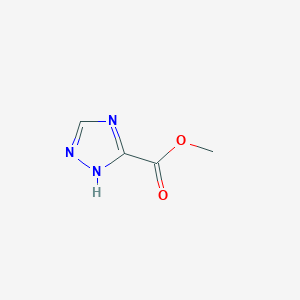Zhuang Yiqiang comments on the outline of national health service system planning (2015-2020)
-
Last Update: 2015-06-09
-
Source: Internet
-
Author: User
Search more information of high quality chemicals, good prices and reliable suppliers, visit
www.echemi.com
Source: health / Gao Wei, June 9, 2015, at the health summit held at the end of May, 2015, Zhuang Yiqiang, who just retired as the Deputy Secretary General of China Hospital Association, attended the scene as the director of the management research center of Hong Kong Albert hospital, and was sponsored by Johnson & Johnson to improve and innovate the management of medical technology and services in the new normal At the forum, the general office of the State Council released the outline of the national health service system planning (2015-2020) to the attending medical workers and managers The new health planning outline is divided into seven parts: planning background, objectives and principles, general layout, all kinds of medical and health institutions at all levels, health talents, functional integration and division of labor, implementation of security and supervision and evaluation Zhuang Yiqiang summarized the core objectives and contents of the plan as two points: first, adjust the structure; second, integrate the system to promote balanced development The main adjustment is to adjust the resources of large hospitals so that they no longer occupy the market too strongly; what needs balanced development is a three-level medical system with reasonable function and resource allocation In Zhuang Yiqiang's view, this round of planning has a significant advantage, which is to put forward many specific and easy to evaluate quantitative indicators According to the index of thousand beds in hospital service capacity, the target for 2013-2020 is to increase from 4.55 to 6 beds, with a growth rate of 32% The target of this index includes "hospital" and "grass-roots medical institutions", and the hospital part includes "public hospital" and "social hospital" Among them, the growth of indicators is mainly achieved by "hospitals", with the growth target of 4.8 from 3.56 And this growth will mainly rely on "social hospitals", the growth target is from 0.52 to 1.5, with an increase rate of 188% The growth target of "public hospitals" is to increase from 3.04 to 3.3, with a growth rate of only 8% In other words, in 2020, the inpatient service capacity of "social hospitals" should account for nearly one-third of all hospitals However, the resources of "social hospitals" are distributed in the provincial, municipal and county-level medical systems There is no relevant data in this plan that can reflect the intention and tendency of the government The growth target of the beds of public hospitals at the level of "county hospitals" is from 1.26 to 1.8, with a growth rate of 43% It seems that the government still intends to play an important role in the subsidence of bed resources In the part of "primary medical institutions" other than "hospitals", the growth target is from 0.99 bed to 1.2 bed, with a growth rate of 21% Obviously, the current composition of community and township health centers (clinics), or the composition of general practitioner groups that will grow in the future, will not become the main body of the growth of inpatient services Compared with the sinking of bed resources, the more challenging goal is still the sinking of human resources However, although the program outlines the total number of licensed (Assistant) doctors, registered nurses and public health personnel per 1000 population, there is no structural indicator of how these personnel are distributed in the tertiary medical system It is worth mentioning that the total growth target of "number of general practitioners per 10000 population" is from 1.07 to 2, almost doubling, far higher than the growth target of the above three categories of health personnel Moreover, as Zhuang Yiqiang pointed out, this indicator is also the only binding indicator in the whole planning outline, and others are guiding indicators "Guidance, that is, it's OK to do it, not to do it." Zhuang stressed that this reflects the urgent mentality of the government to strengthen the strength of grass-roots medical care When it comes to the growth goal of general practitioners, Zhuang Yiqiang also expressed his concern According to his calculation, the annual increase of general practitioners' graduates is not enough to ensure the realization of the goal of general practitioners in 2020 However, if the government trains a lot of doctors or village doctors as general practitioners, they may change soup or medicine, resulting in the level of the whole grass-roots medical treatment is still not up to the requirements Secondly, Zhuang Yiqiang also expressed some objections to the growth indicators of the ratio of medical care to bed care He believes that compared with the global average of 1:3, or even 1:5, the ratio of medical care in China is 1:1, and the gap in the number of nurses is far beyond the mark Even if the ratio of medical care reaches 1:1.25 by 2020, nurses will still not be enough to use "Doctors say one sentence, nurses may have to explain ten sentences to patients, but at present, Chinese nurses have no time to explain." However, the number of nurses is insufficient, and the relationship between doctors and patients can not be completely reversed In Zhuang Yiqiang's view, the low charge of nursing service makes it difficult to generate income for the hospital, which is the main reason why the hospital presidents who aim at seeking profits are reluctant to recruit more nurses Zhuang also pointed out that the main reason for the lack of structure from the three-level medical system to the proportion of medical staff lies in the profitability of Chinese hospitals The root of the problem lies in the government's policy of "no money for policy" in the 1980s In other words, the government is no longer responsible for the main investment needed for the development of the hospital, but gives the hospital insufficient policy resources to rely on drug price differential subsidies for development funds Although this has encouraged the enthusiasm of the hospital to generate income and strengthened all kinds of hardware resources of the hospital, the results of this major policy are far from correct At present, the serious problem faced by China's medical reform is that the government is taking away the policy resources once given to hospitals, but "how to make up the money" has not been completely clear Zhuang Yiqiang's suggestion is that the major public policies formulated by the government must be evaluated, which should not be conducted by the government itself, nor by the institutions and individuals employed by the government, but by a third party, preferably an international third party.
This article is an English version of an article which is originally in the Chinese language on echemi.com and is provided for information purposes only.
This website makes no representation or warranty of any kind, either expressed or implied, as to the accuracy, completeness ownership or reliability of
the article or any translations thereof. If you have any concerns or complaints relating to the article, please send an email, providing a detailed
description of the concern or complaint, to
service@echemi.com. A staff member will contact you within 5 working days. Once verified, infringing content
will be removed immediately.







